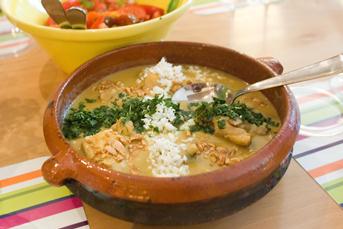Authentically Ethnic
04 March 2012
 Italian is so mainstream it might as well be considered American cuisine, reports Mintel. Meanwhile, growing interest in genuine ethnic fare aligns with a broader consumer trend, “The Real Thing.”
Italian is so mainstream it might as well be considered American cuisine, reports Mintel. Meanwhile, growing interest in genuine ethnic fare aligns with a broader consumer trend, “The Real Thing.”
Ethnic food preparation and consumption has been on the rise over the past several years and, according to Mintel’s latest research, it will continue its growth. But what’s most important to consumers when it comes to their favorite ethnic fare? Authenticity. Two-thirds of Mintel respondents who eat ethnic food at home say authentic or traditional flavors is the most important factor when buying or eating ethnic food.
“If flavor fanatics are going to spend their hard-earned money and time visiting an ethnic restaurant or buying international foods to prepare at home, increasingly, they want it to be the real deal,” says David Browne, senior analyst at Mintel. “Therefore, products positioned as such have a greater likelihood of finding favor with consumers.”
Aside from an authentic flavor, ethnic foodies also place importance on all-natural (49%), premium/gourmet or artisanal (49%) and reduced fat (48%) positional claims, which round out the top characteristics overall that matter in the purchase decision.
“This interest in genuine ethnic fare aligns with a broader consumer trend, ‘The Real Thing,’ where we see consumers continually set a higher bar for what they consider authentic,” says Alexandra Smith, director of consumer trends, Mintel. “Today's American has much greater exposure to diverse cultures than an American 20 years ago. And as once-exotic things like sushi or yoga become mainstream, we seek new, more niche markers of cultural authenticity.”
When making ethnic fare at home, 70% of Mintel respondents say they made Italian food in the past 30 days. However, Italian food has become so commonplace in the United States, it is hardly considered ethnic anymore. Nearly two-thirds (63%) of people have made Mexican food, followed by 46% who whipped up a Chinese creation. Twenty-nine percent of home cooks felt like one type of food wasn’t enough and decided to go “fusion”—mixing elements from various culinary traditions while not fitting specifically into any.
Meanwhile, a full 81% of respondents say they ate ethnic food away from home in the month leading up to the survey, a 6-percentage-point increase from 2010. According to Mintel Menu Insights, the five most-popular ethnic cuisine menu items in restaurants at the end of Q3 2011 were Italian, Mexican, Chinese, Pan-Asian and Japanese.
Mediterranean and Middle Eastern food saw robust growth in the past year and both are expected to continue to gain in popularity in the future, likely due to food provider Sabra, as well as a healthy and convenient positioning.
“Consumer interest in healthy eating and convenience food contributes to the growth seen in the Mediterranean and Middle Eastern categories,” adds David Browne. “The growing popularity of pre-packaged hummus and Greek-style yogurt mixed with the deli salad case offering chickpea, tabbouleh and orzo salads is giving this cuisine a healthful and easy edge on the competition.”
Photo: This gazpacho de garbanzos as taught by Gabriela Llamas, chef/instructor at Alambique, a vocational cooking school in Madrid, Spain, capitalizes on puréed chickpeas for a creamier version of the popular chilled soup familiar to American palates. Courtesy of Foods From Spain
